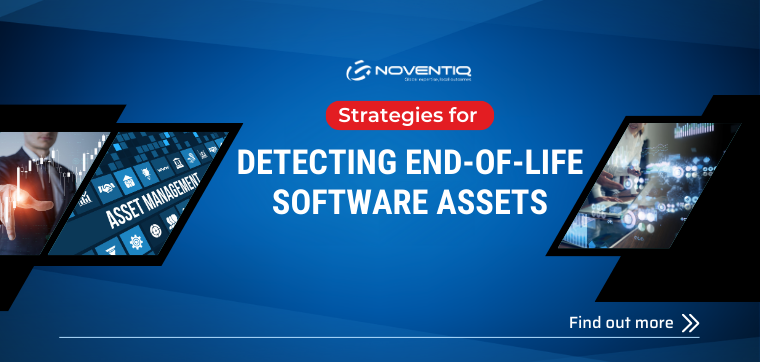Understanding the risks associated with EOL assets
End-of-life assets refer to software applications that have reached their expiration date, either due to vendor discontinuation, obsolescence, or strategic changes within an organization. Ignoring these assets can lead to various risks, including security vulnerabilities. Snow products collect vulnerability data from the National Vulnerability Database and provide reports on what vulnerabilities exist in your organization, their severity and where those vulnerabilities reside. The problem with EOL applications is these assets can no longer be updated and therefore, these assets hold even greater risks. Identifying EOL applications and removing these applications from your network is critical to prevent security incidents. However, many organizations have not implemented this preventative measure.
The challenges of discovering EOL assets
Discovering EOL assets can be a complex and daunting task, especially in organizations with a large number of software applications. Several challenges may arise, such as:
- Lack of visibility: In multi-departmental setups, different teams may acquire applications independently, resulting in siloed information and limited visibility into the overall software asset landscape.
- Inadequate documentation: Outdated or incomplete records of software applications can make it challenging to track their lifecycle and identify EOL assets accurately.
- Vendor transparency: Software vendors may not always provide sufficient advance notice about discontinuations or changes in their product offerings, making it difficult for businesses to plan accordingly.
Strategies for discovering EOL assets
To build a strong software asset lifecycle management practice, here are a few strategies you can implement:
- Conduct a comprehensive software audit: Initiate a thorough audit to gain a holistic view of all the software being used within the organization. This process should include evaluating usage patterns, contract terms, renewal dates and integration dependencies.
- Encourage cross-department collaboration: Foster collaboration between IT, procurement, finance, and other relevant departments to ensure better communication regarding applications and their lifecycle information. This collaborative approach promotes transparency and keeps the flow of information going, so you don’t lose any valuable details.
- Establish regular vendor communication: Maintain open lines of communication with software vendors to stay informed about any upcoming changes, product sunsets, or end-of-life announcements. This proactive approach allows you to adapt your software asset management strategies and make informed decisions for your organization.
- Implement an asset retirement plan: Develop a systematic process for retiring EOL assets, including proper data backup, migration strategies and knowledge transfer. Ensure compliance with data protection and privacy regulations during the retirement process.
- Leverage software asset management tools: Explore software asset management technology to find the right fit for your organization’s needs. The right tools can automate the discovery process and proactively help you manage EOL assets before you end up in a vulnerable position.
Discovering EOL assets is a critical step towards maintaining an optimized and secure software landscape. By proactively identifying and managing EOL assets, organizations can reduce security risks, optimize costs and ensure seamless operations. Having the strategies above in place can help you implement proactive asset lifecycle management to drive long-term success in your software asset management journey.
How Snow Software helps you discover end-of-life assets
Snow Software can help you scan your environment to reveal:
- IT assets already at the end of life
- IT assets reaching end of life within 12 months
- How many devices are impacted
- Where these assets are located
Noventiq Contacts

Hotline: 028 3825 9999
M: vietnam@noventiq.com
W: noventiq.vn
